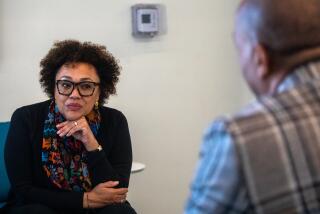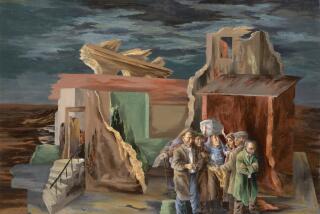Keeping the arts in the picture
- Share via
I recently sent an article to a local philanthropic leader about the importance of helping arts organizations during the recession. I thought he might draw inspiration from it, but that was too optimistic.
“I don’t need inspiration,” he quickly responded. “We aren’t supporting the arts; we’re supporting essentials.”
I know times are tough and charities have a lot of demands. But I would argue that the arts are essential -- and they are under threat.
Last month, the results of the U.S. Department of Education’s National Arts Report Card revealed that only 16% of the eighth-graders visited a museum at least once last year. That’s down from 22% in 1997. The percentage of adults who visited a museum decreased too, from 26% in 1997 to 23% last year. The performing arts are experiencing steadily declining audiences. And arts education in schools is being cut drastically.
Why should we care? Because experiencing and creating art is a crucial part of developing young people who can understand the world’s complexity and tackle its problems with a full range of tools.
Several years ago, I was working with a group of inner-city youths at an overnight community arts camp in the local mountains. The group was studying Shakespeare’s “A Midsummer Night’s Dream,” with the artistic task of creating and performing an original theatrical presentation inspired by “Midsummer.”
Because so much of the play takes place in a forest at night, we decided that the first step should be for the kids to spend time in the woods on a real midsummer night. They were urged to explore a variety of artistic responses to the experience. Some wrote poetry; some danced in celebration of nightfall; others sang songs about the moon.
One 17-year-old girl was particularly affected by the experience. As she presented her spoken-word description of a night in the forest, she seemed increasingly overwhelmed. Struggling in a broken cadence to maintain a poetic rhythm, she confessed that she had never before seen the sky like this -- pure black, punctuated with bright white stars and a blue moon. The only night sky she had known was one filtered by orange sodium streetlights and city haze.
As she struggled to find poetry, she shifted her gaze and her flashlight beam between pages of a Shakespeare play and her notebook, filled with words she had carefully crafted. We struggled with her, rejoicing in her awakening even as we felt her pain at realizing that people with more money than she could know nighttime in a very different way.
That night in the forest put new colors on the young woman’s palette. And her experience with the arts gave her a canvas on which to use them. Exposing her to nature delivered the lesson. Exposing her to art gave her a means to express what she’d learned.
Here’s some advice for anyone who has to decide what is “essential” when making philanthropic funding decisions. Some summer night, take time out to look at the sky from someplace really dark. Then try to express -- visually or in words -- what the experience was like. I suspect you’ll come to understand why art is essential.
More to Read
The biggest entertainment stories
Get our big stories about Hollywood, film, television, music, arts, culture and more right in your inbox as soon as they publish.
You may occasionally receive promotional content from the Los Angeles Times.










